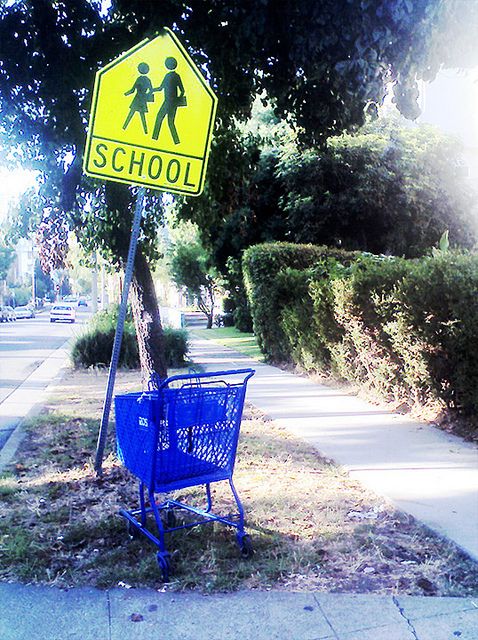Email Marketing: Reclaim abandoned shopping carts with triggered ‘remarketing’ emails
We’ve said it before, and we’ll say it again. The most significant challenge to effective email marketing is targeting recipients with relevant content, according to the MarketingSherpa 2011 Email Marketing Benchmark Report.
The most effective tactic for increasing relevance is to send triggered emails, according to the report. In fact, 70% of consumer-marketers using email reported the tactic as “very effective” and 47% of B2B email marketers agreed.
“Remarketing” emails are a type of triggered message that can be very effective. One example is an email sent after a customer abandons a shopping cart. The message lists the items left behind and encourages the customer to return and complete the purchase.
Charles Nicholls, Founder and Chief Strategy Officer, SeeWhy, and his company specialize in abandoned-cart emails. Below, we’ve included his comments and tactics for improving your own.
Strong performance from relevant emails
An effective remarketing email is closely tied a customers’ recent activity, which makes it very relevant. On a basic level, an abandoned-cart email should:
• Clearly be from your company
• List the products left behind
• Supply useful information (such as a link back to the abandoned cart and your contact info)
In February, SeeWhy crunched data from emails sent in response to 65,000 abandoned shopping carts across its roughly 1,000 clients (overwhelmingly B2C companies). The average metrics are much stronger than industry benchmarks, which Nicholls attributes to the high relevance of the emails.
“You can write remarketing emails that will annoy and drive-up unsubscribe rates up,” he says. “The key is to do it in such a way that you’re really delivering a great service to the customer and they really appreciate it.”
How to Design Remarketing Emails
Here’s Nicholls’ advice for starting and improving your abandoned-shopping-cart emails:
1. Send the first email immediately
Ample industry research, including research from MarketingExperiments, emphasizes that the email should be sent immediately after the customer abandons the cart. Even waiting a single hour can pound your performance.
2. Provide a service, not a sales pitch
The email should be service-oriented, Nicholls says. “This is not a glossy promotion designed by an advertising agency.”
Tell customers that they left their cart and you want to help. Provide relevant information, list your contact information and add a link directly back to the abandoned cart.
“We tend to focus more on a text-based presentation, really delivering a customer service message where the content is incredibly personal and relevant,” Nicholls says. “Images that get used tend to be fairly limited.”
3. Start with a three-email sequence
The most important email is delivered immediately after a customer abandons a cart, Nicholls says. Beyond that, he suggests his clients start with a three email series with the following timing:
• Email #1: Sent immediately
• Email #2: Sent 23 hours after first email
• Email #3: Sent 6 days and 23 hours after second email
“That gives them a starting point and they can test from there.”
4. Avoid discounts
The top two reasons customers abandon carts, Nicholls says, are price and timing. You can overcome the price issue by offering a discount, but this should be avoided. You’re likely to win back customers, but you’re also likely to condition them to abandon more carts in the future.
“Many campaigns work incredibly well without offering any promotions at all. That’s because customers clearly already have some intent.”
If you want to test a discount, Nicholls suggests doing so in the third and final email of a sequence.
5. Test timing and messaging
Of course, these tactics are only a starting point. Nicholls suggests marketers run tests to find the best approaches to fit their markets. One test he suggests applies to companies that offer free shipping after a certain price level.
“If the site has free shipping after $100, then for cart values greater than $100 we would send a different email that reiterates that their cart already qualifies for free shipping. Those types of things become really important when you get into the whole promotions area.”
Related resources
All New MarketingSherpa Email Marketing Advance Practices Handbook
MarketingSherpa 2011 Email Marketing Benchmark Report
Chart: Top tactics for delivering relevant email content
Members Library — Webinar Replay: Top email tactics to improve relevancy and deliverability
Photo attribution: kevindean
Categories: Email Marketing Email Marketing, remarketing, shopping cart abandonment










Thank you for the article Adam. Very concise and timely.
A suggestion for next time would be to include all the companies that specialize in abandonment remessaging, aka retargeting, such as my own, FetchForce.com. All the companies in the field offer the same base service and have different price points and additional services so it would be good to give your readers a complete view of the choices they have.
Thanks again,
Lucas @Fetchforce
Hi Lucas — thank you for the suggestion. I will be sure to keep your company in mind for future articles and blog posts on this topic.
Good information. We are considering starting a remarketing program and this was very helpful
Adam – Great article and the focus on tangible suggestions is particularly useful.
At Klaviyo (email marketing platform for eCommerce and Web which I co-founded), we do a lot of remarketing and abandoned cart emails and something we’ve seen work really well for our eCommerce customers is varying message across the three email series – so the first message references the abandoned cart and shows the items, whereas the 2nd and 3rd might be more focused on highlighting other reasons to return, promotions already going on, etc.
If I had one piece of advice for most stores, it’s to start small and send that first remarketing email. The biggest block is getting started.